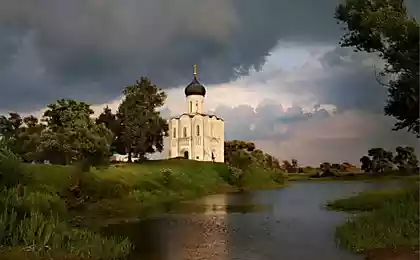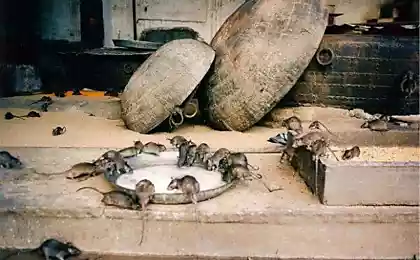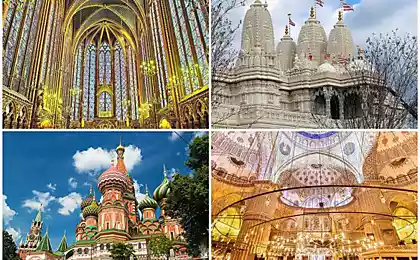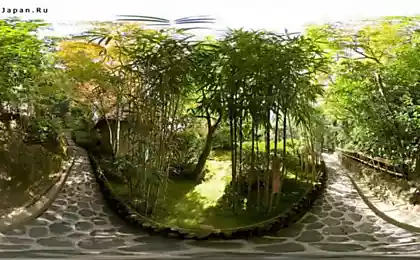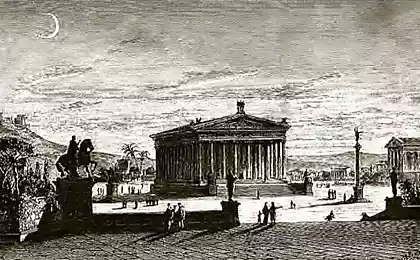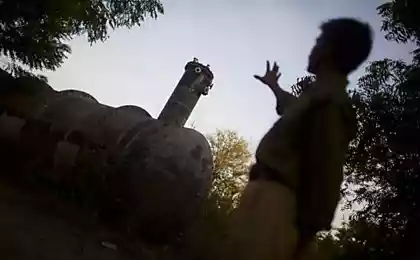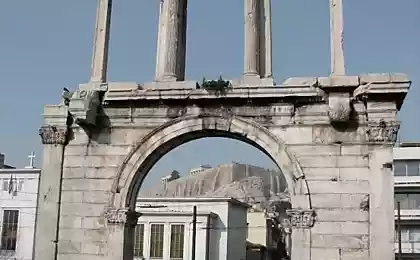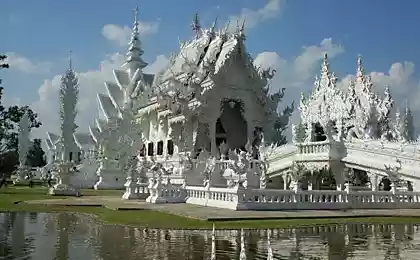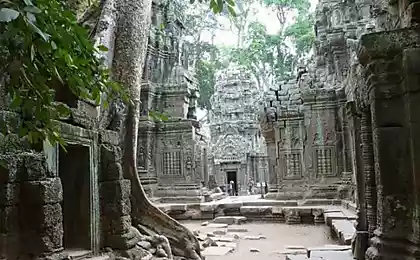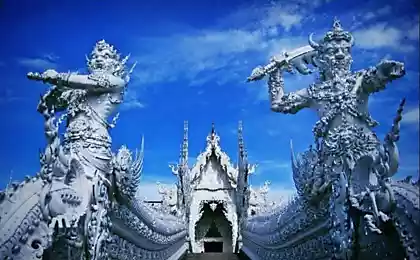671
You need to see this! Mysterious hanging pillar Shrine, Lepakshi
Veerabhadra temple (lepakshi temple) among other things is famous for another interesting engineering feature. Among the 70 stone columns, there is one that hangs in the air. The base of the column barely touches the ground, and under it you can pass objects, such as a thin sheet of paper or a piece of cloth from one side to the other.
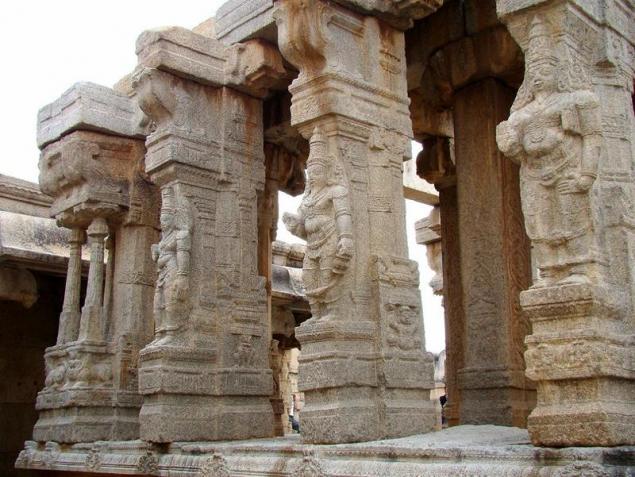
Let's see how it looks ...
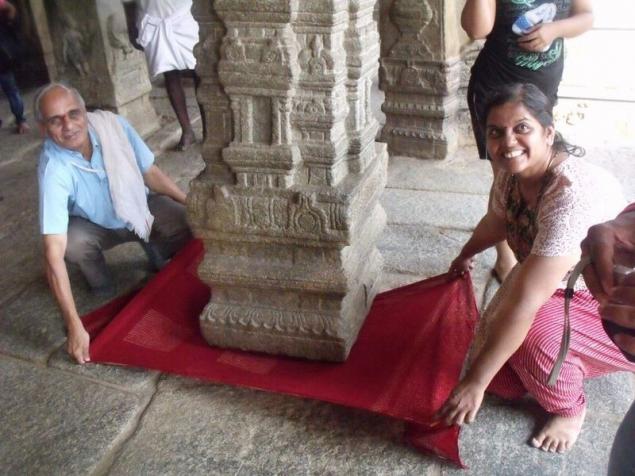
Visitors showing hanging pillar in the temple of Lepakshi.
Beautiful Church of the 16th century Veerabhadra, also known as the temple of Lepakshi, is located in the small historic town of Lepakshi in Anantapur, Andhra Pradesh, India, about 15 km East of Hindupur and approximately 120 km North of Bangalore. It was built in the typical style Vijayanagara architecture and has many exquisite sculptures of gods, goddesses, dancers and musicians. Hundreds of paintings on walls, columns and ceiling depict stories from the epics Mahabharata, Ramayana and the Puranas.
The decoration of the temple consists of 7.5 meters by 4.2 meters Veerabhadra mural, depicting the fire of God Shiva, created on the ceiling, which is the largest mural one piece in India. In front of the temple is a large Nandi (bull), which is carved from a solid piece of stone, and is one of the largest of its kind in the world.

The village of Lepakshi has a significant place in the great Indian epic Ramayana. Legend has it that bird Jatayu, wounded the king of Lanka, Ravana, fell down here, after a vain struggle with the king, who was carried from SITA, wife of Rama, king of Ayodhya. When Rama came to this place, he saw a bird and with compassion said “Le Pakshi” – which means “Rise, bird”.
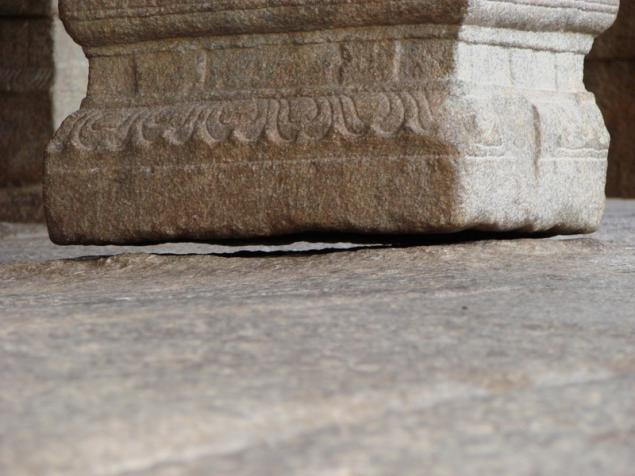
In the temple stored samples of sculpture and painting, belonging to the historical period. The temple is dedicated to Virabhadra — a fierce form of Shiva. This important religious building stands on three levels in the middle of two concentric fences. The path to the temple is through the Northern gopura. At the entrance of the temple there are sculptures of river goddesses Ganga and Yamuna.
A distinctive feature of this temple is sophistication and originality. In the Central open space of the hall are carved massive pillars on which are carved the deities, guardians and sages. Granite Ling in the main sanctuary is decorated with the impressive monoliths of the seven-headed serpent (Naga). The ceilings of the two adjacent mandap decorated scenic images made of bright mineral and vegetable colors. Original decorated walls of the Ardha mandapa. Artful images of various deities and patrons indicate a high level of art in the age of Vijayanagar.
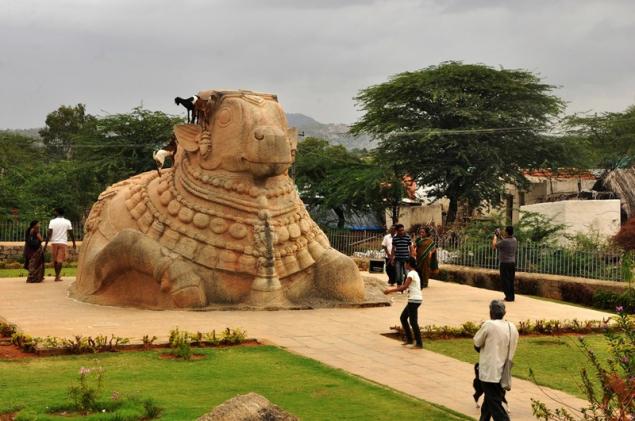
About Veerbhadra temple many legends. One of them says that during the construction of this temple Virupaksa misused cash. For this he suffered a terrible punishment, depriving yourself of the eye. This is evidenced by the two red spots preserved on the Western wall of the inner sanctuary.
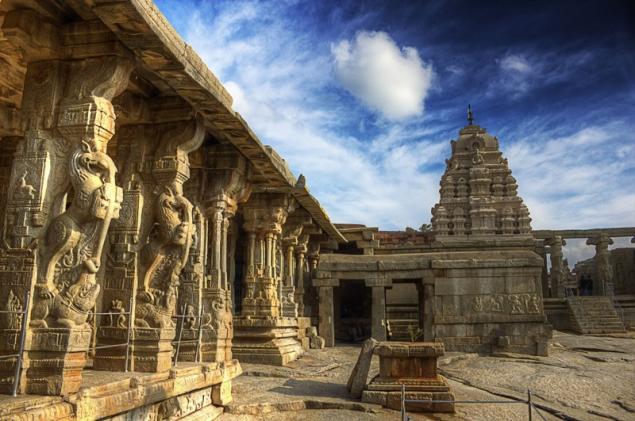
Temple Lepakshi.
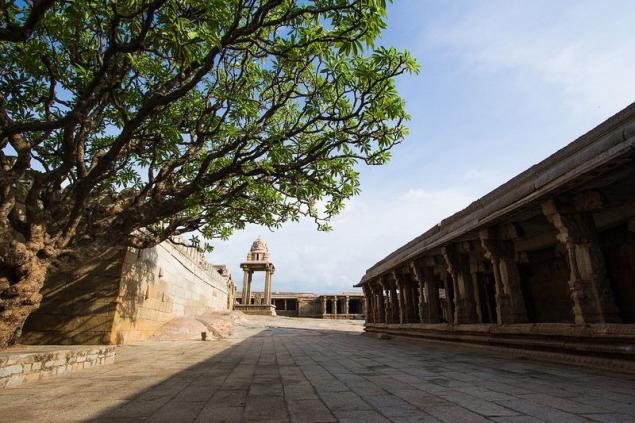
Temple Lepakshi.
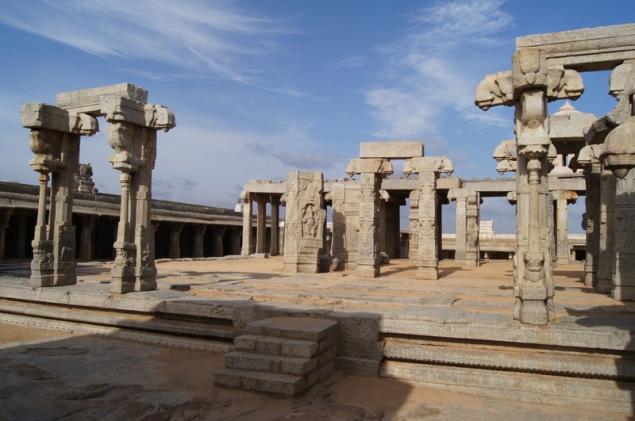
Temple Lepakshi.
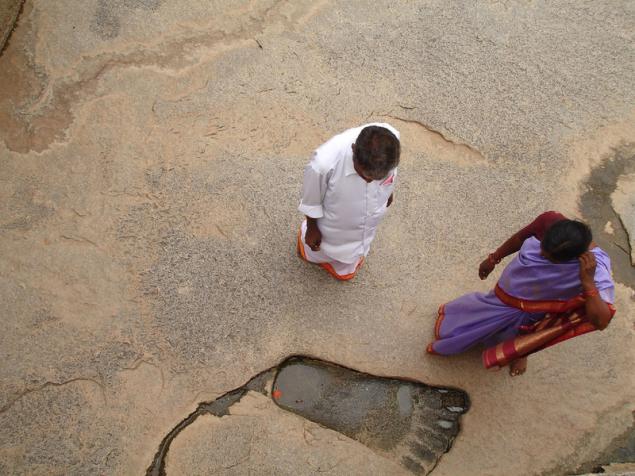
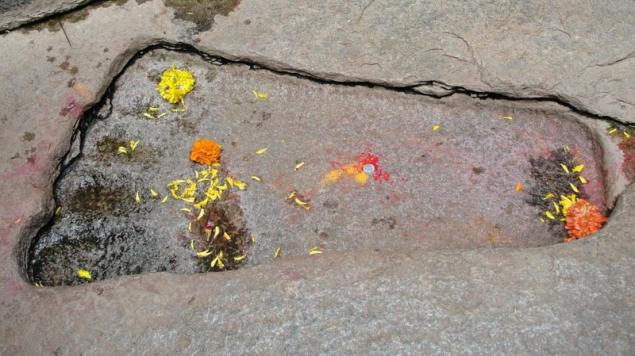
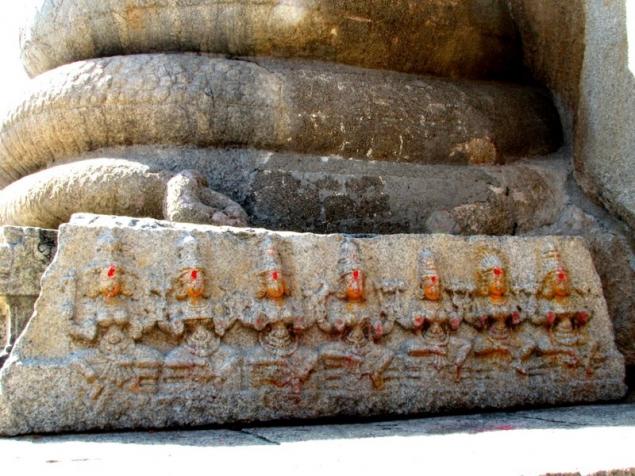
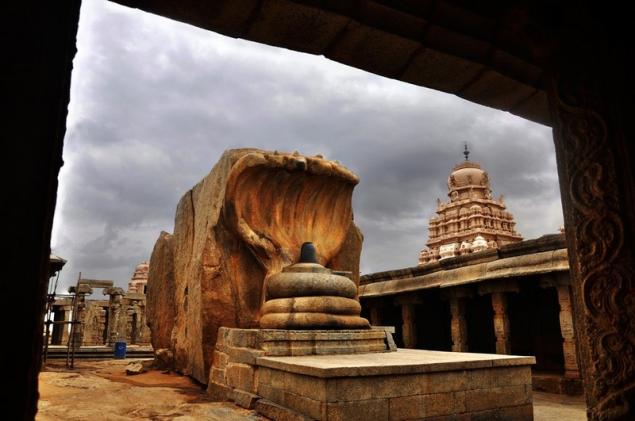
Deserve the attention of a monolithic seven-headed serpent was naked, bent over the lingam of Shiva (in the South-Eastern part of the temple), as well as colourful frescoes covering the ceilings and friezes of halls mandap and some sanctuaries. They depict scenes from the legends of the Puranas and the Mahabharata and the Ramayana.
Fresco (7 x 4 m) in the main sanctuary Veerbhadra is the largest in Asia. In the center there Himself, down – praying Wirrpanda and his family. Interesting stone carving in the pavilions-mandapa of mocha (Mukha), Natya (Natya) and Lata (Lata). It is believed that floral patterns (96 species), 42 columns adorning Lata mandapa (lit. "The pavilion of the vines"), over time, became widely used by weavers of Andhra Pradesh.

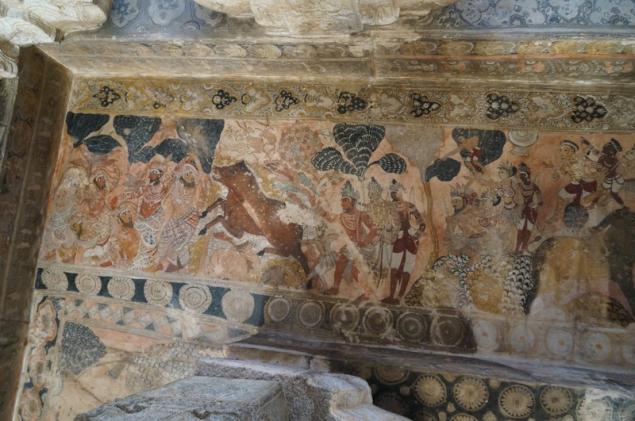
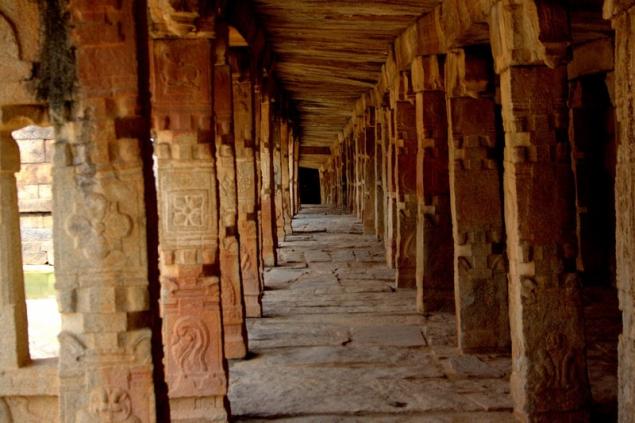
published
P. S. And remember, only by changing their consumption — together we change the world! ©
Source: masterok.livejournal.com/

Let's see how it looks ...

Visitors showing hanging pillar in the temple of Lepakshi.
Beautiful Church of the 16th century Veerabhadra, also known as the temple of Lepakshi, is located in the small historic town of Lepakshi in Anantapur, Andhra Pradesh, India, about 15 km East of Hindupur and approximately 120 km North of Bangalore. It was built in the typical style Vijayanagara architecture and has many exquisite sculptures of gods, goddesses, dancers and musicians. Hundreds of paintings on walls, columns and ceiling depict stories from the epics Mahabharata, Ramayana and the Puranas.
The decoration of the temple consists of 7.5 meters by 4.2 meters Veerabhadra mural, depicting the fire of God Shiva, created on the ceiling, which is the largest mural one piece in India. In front of the temple is a large Nandi (bull), which is carved from a solid piece of stone, and is one of the largest of its kind in the world.

The village of Lepakshi has a significant place in the great Indian epic Ramayana. Legend has it that bird Jatayu, wounded the king of Lanka, Ravana, fell down here, after a vain struggle with the king, who was carried from SITA, wife of Rama, king of Ayodhya. When Rama came to this place, he saw a bird and with compassion said “Le Pakshi” – which means “Rise, bird”.

In the temple stored samples of sculpture and painting, belonging to the historical period. The temple is dedicated to Virabhadra — a fierce form of Shiva. This important religious building stands on three levels in the middle of two concentric fences. The path to the temple is through the Northern gopura. At the entrance of the temple there are sculptures of river goddesses Ganga and Yamuna.
A distinctive feature of this temple is sophistication and originality. In the Central open space of the hall are carved massive pillars on which are carved the deities, guardians and sages. Granite Ling in the main sanctuary is decorated with the impressive monoliths of the seven-headed serpent (Naga). The ceilings of the two adjacent mandap decorated scenic images made of bright mineral and vegetable colors. Original decorated walls of the Ardha mandapa. Artful images of various deities and patrons indicate a high level of art in the age of Vijayanagar.

About Veerbhadra temple many legends. One of them says that during the construction of this temple Virupaksa misused cash. For this he suffered a terrible punishment, depriving yourself of the eye. This is evidenced by the two red spots preserved on the Western wall of the inner sanctuary.

Temple Lepakshi.

Temple Lepakshi.

Temple Lepakshi.




Deserve the attention of a monolithic seven-headed serpent was naked, bent over the lingam of Shiva (in the South-Eastern part of the temple), as well as colourful frescoes covering the ceilings and friezes of halls mandap and some sanctuaries. They depict scenes from the legends of the Puranas and the Mahabharata and the Ramayana.
Fresco (7 x 4 m) in the main sanctuary Veerbhadra is the largest in Asia. In the center there Himself, down – praying Wirrpanda and his family. Interesting stone carving in the pavilions-mandapa of mocha (Mukha), Natya (Natya) and Lata (Lata). It is believed that floral patterns (96 species), 42 columns adorning Lata mandapa (lit. "The pavilion of the vines"), over time, became widely used by weavers of Andhra Pradesh.



published
P. S. And remember, only by changing their consumption — together we change the world! ©
Source: masterok.livejournal.com/
The thirst for distraction: why the person is bored with himself
10 Cuban habits that surprise foreigners

